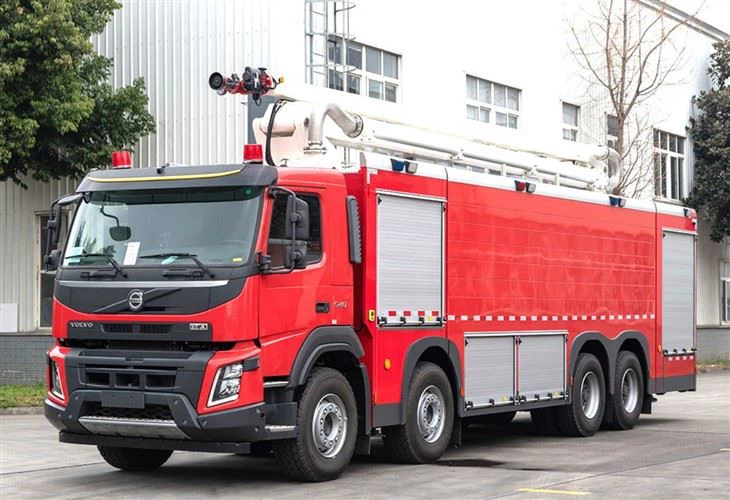Introduction
Fire truck tanks are critical components of firefighting vehicles, designed to store, transport, and effectively deploy water and firefighting foam during emergencies. Understanding the various aspects of fire truck tanks, including their types, design features, maintenance, and innovations, can help enhance the effectiveness of emergency response and fire suppression efforts. This article delves into the specifications, types, and functions of fire truck tanks, along with practical examples and maintenance tips for fire departments and emergency responders.
1. What Is a Fire Truck Tank?
A fire truck tank, often referred to as a water tank or apparatus tank, is a specialized storage unit on a fire engine that holds the water or foam used to combat fires. These tanks are vital for providing quick and efficient firefighting capabilities, especially in areas where hydrants are not available.
1.1 Purpose of Fire Truck Tanks
- Store water or firefighting foam
- Ensure quick access during emergencies
- Support various firefighting methods
1.2 Importance in Firefighting Operations
The presence of a water tank on a fire truck significantly enhances the capability of firefighters to respond swiftly to an incident, particularly in rural or remote areas. Fire truck tanks can hold thousands of gallons of water, enabling firefighters to initiate suppression activities immediately.
2. Types of Fire Truck Tanks
Fire truck tanks come in various shapes and sizes, each designed for specific functionalities. Understanding the different types is essential for selecting the right tank for specific firefighting needs.
2.1 Steel Tanks
Steel tanks are commonly used for their durability and strength. They are resistant to impacts and are suitable for heavy-duty applications.
2.2 Aluminum Tanks
Aluminum tanks are lightweight and corrosion-resistant. They offer an excellent balance of durability and weight, making them a popular choice for many firefighting vehicles.
2.3 Polyethylene Tanks
Polyethylene tanks are made from a type of plastic that is resistant to chemicals and UV rays. They are typically used for smaller fire apparatus and are less expensive to manufacture.
2.3.1 Advantages of Polyethylene Tanks
- Lightweight and easy to install
- Corrosion-resistant
- Cost-effective
3. Key Features of Fire Truck Tanks
Fire truck tanks are designed with various features to optimize their functionality and effectiveness in emergencies.
3.1 Capacity
The capacity of fire truck tanks varies based on the size of the apparatus and the intended operational use. Common capacities range from 500 to 4,000 gallons.
3.2 Shape and Design
Most tanks are designed to fit seamlessly into the truck chassis, optimizing space while maintaining balance during operations.
3.2.1 Common Shapes
- Rectangular
- Cylindrical
3.3 Baffles
Baffles are internal structures within the tank that help reduce sloshing of the water during movement, providing stability to the vehicle.
3.4 Access and Maintenance Points
Ease of access for maintenance and refilling is crucial. Tanks are equipped with manholes, drain valves, and other access points to facilitate this.
4. Fire Truck Tank Maintenance
Routine maintenance of fire truck tanks is essential to ensure longevity and operational efficiency. Neglecting tank maintenance can lead to serious issues, including leaks and structural failures.
4.1 Routine Inspections
Regular inspections should be conducted to check for leaks, corrosion, and other signs of wear and tear.
4.2 Cleaning and Flushing
It’s important to flush the tank regularly to prevent sediment buildup and contamination of the water supply.
4.3 Record Keeping
Maintaining a log of inspections, maintenance activities, and repairs is vital for accountability and compliance with safety regulations.
5. Innovations and Technological Advances
Recent advancements in technology have led to significant improvements in fire truck tank design and functionality.
5.1 Smart Tanks
Some modern fire truck tanks come embedded with sensors that can monitor water levels, detect leaks, and assess the overall health of the tank.
6. Practical Tips for Firefighters
Understanding the characteristics and capabilities of fire truck tanks can greatly enhance firefighting effectiveness.
6.1 Training on Equipment Use
Regular training should be conducted for firefighters on how to utilize tank systems effectively, including understanding water flow rates and pump operations.
6.2 Familiarization with Local Hydrants
Firefighters should be familiar with the locations and capacities of local hydrants to effectively manage tank resources during a call.
6.3 Effective Water Management
Knowing how to manage water usage wisely can prevent unnecessary draining of tank resources in extended firefighting operations.
7. Real-World Examples
Case studies showcasing the effectiveness and challenges of fire truck tanks in various firefighting scenarios provide valuable insights.
7.1 City Fire Response
In urban areas, fire departments often work with pressurized water systems, but tanks still play a critical role when dealing with fires in high-rise buildings or inaccessible locations.
7.2 Rural Fire Response
In rural settings, fire truck tanks often serve as the primary water source, highlighting their critical role in emergency situations.
FAQ Section
1. What is the average capacity of a fire truck tank?
The average capacity of a fire truck tank typically ranges from 500 to 4,000 gallons, depending on the size and type of the apparatus.
2. How often should fire truck tanks be inspected?
Fire truck tanks should be inspected at least annually, with routine checks conducted more frequently to ensure they are in good working condition.
3. What materials are fire truck tanks made from?
Fire truck tanks can be made from several materials, including steel, aluminum, and polyethylene, each offering different advantages and applications.
4. How do you maintain a fire truck tank?
Maintaining a fire truck tank involves regular inspections, cleaning and flushing, and keeping detailed records of maintenance activities.
5. Are there innovations in fire truck tank technology?
Yes, advancements in technology include the development of smart tanks equipped with sensors for monitoring water levels and detecting leaks.
6. Why are baffles used in fire truck tanks?
Baffles are used to minimize the sloshing of water during transportation, providing stability to the vehicle while on the move.





